Dekolink Wireless CBDASMRPS8 Bi-directional amplifier User Manual Revised Installation and Operating Instruction
Dekolink Wireless Ltd Bi-directional amplifier Revised Installation and Operating Instruction
Contents
- 1. Installation and operating instructions
- 2. Revised Installation and Operating Instruction
Revised Installation and Operating Instruction

FCC ID: OIW CBDASMRPS8
Page 1 of 11
INSTALLATION AND OPERATING INSTRUCTIONS
The following is a copy of Installation and Operating Instructions of the MW-
CBDA-SMR-1W60PS-8 Cellular Bi-Directional Amplifier/Booster.

FCC ID: OIW CBDASMRPS8
Page 2 of 11
INSTALLATION
AND
OPERATING INSTRUCTIONS
FOR
MW-CBDA-SMR-1W60PS-8
BI-DIRECTIONAL AMPLIFIER
(COMPACT BDA)
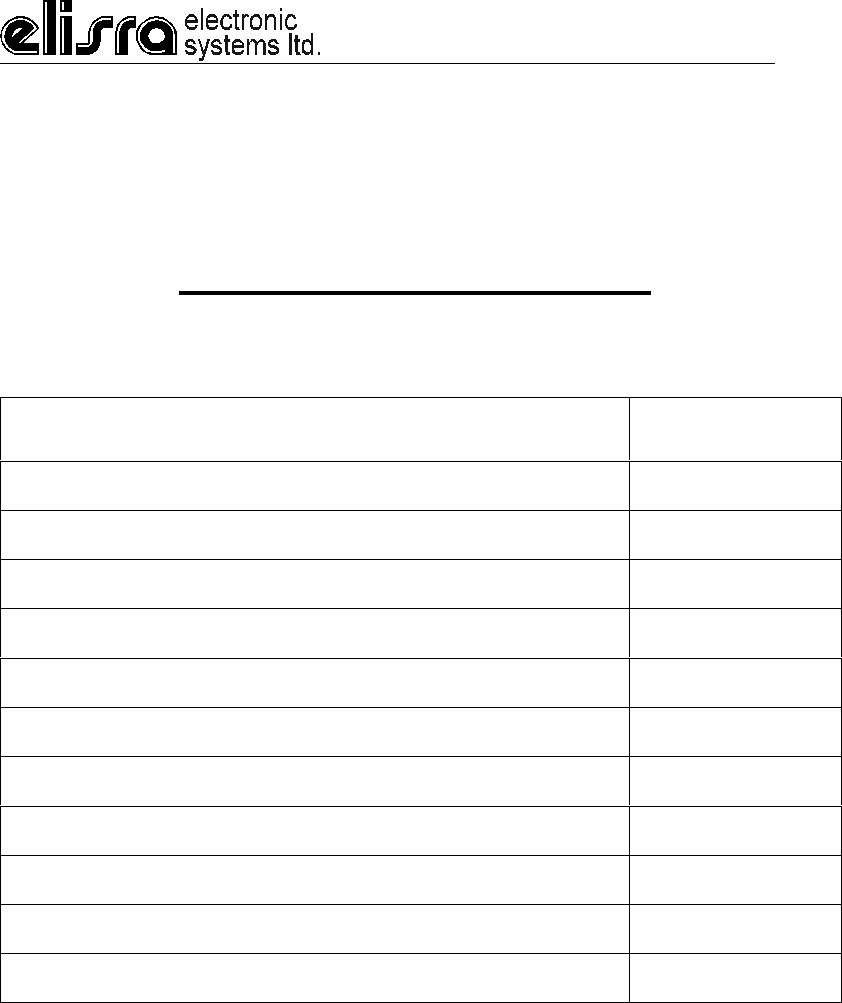
FCC ID: OIW CBDASMRPS8
Page 3 of 11
TABLE OF CONTENTS
PARAGRAPH PAGE NO
BDA OVERVIEW 4
BDA BLOCK DIAGRAM DESCRIPTION 4
BDA BLOCK DIAGRAM DRAWING 5
ELECTRICAL SPECIFICATIONS 6
MECHANICAL SPECIFICATIONS 7
ENVIRONMENTAL CONDITIONS 7
BDA CONNECTIONS 8
PERIODIC MAINTENANCE 8
DIAGNOSTIC GUIDE 9
MECHANICAL OUTLINE 10
RF EXPOSURE WARNING 11
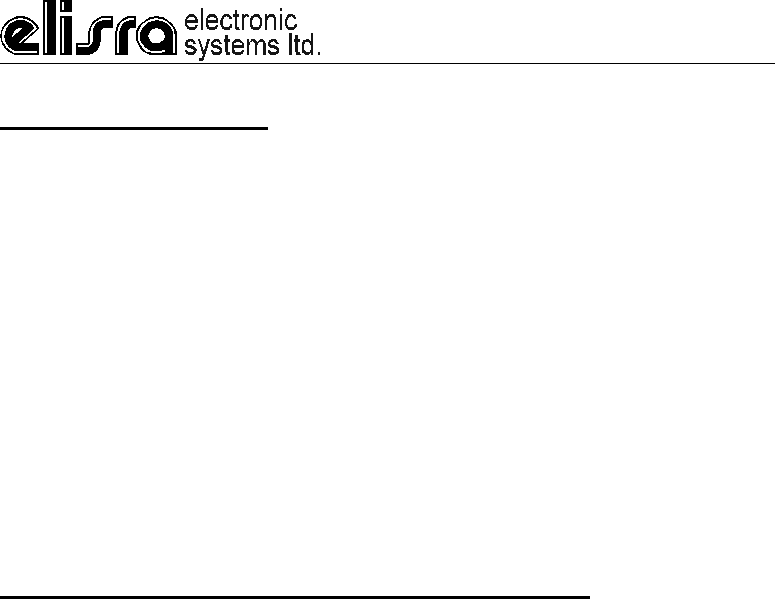
FCC ID: OIW CBDASMRPS8
Page 4 of 11
BDA OVERVIEW:
The BDA assembly provides an exceptional repeater/booster
performances to extend the coverage area of radio
communications in buildings and RF shielded environments.
Features such as high linearity power amplifiers are contributing
for the overall improved system linearity performances. The unit is
based on a duplexed path configuration, having sharp out of band
attenuation for improved isolation between the receiving and
transmitting paths.
BDA BLOCK DIAGRAM DESCRIPTION:
The BDA Downlink path receives the RF signals from base station
amplifies and transmits them to the subscriber. The BDA Uplink
path receives the RF signals from the subscriber amplifies and
transmits them to the base station. Two duplexers frequency
separate the signals to the proper amplifying path and isolate the
two signals.
BDA with AGC (Option A)
The amplifiers in this BDA have an AGC feedback loop. The AGC
circuit senses the output power and when it exceeds the preset
level of +20 dBm it introduces more attenuation. In this manner the
gain of the amplifier is reduced, its output power is limited to +20
dBm and the Intermodulation products are kept low.
The AGC Dynamic range is 30 dB.
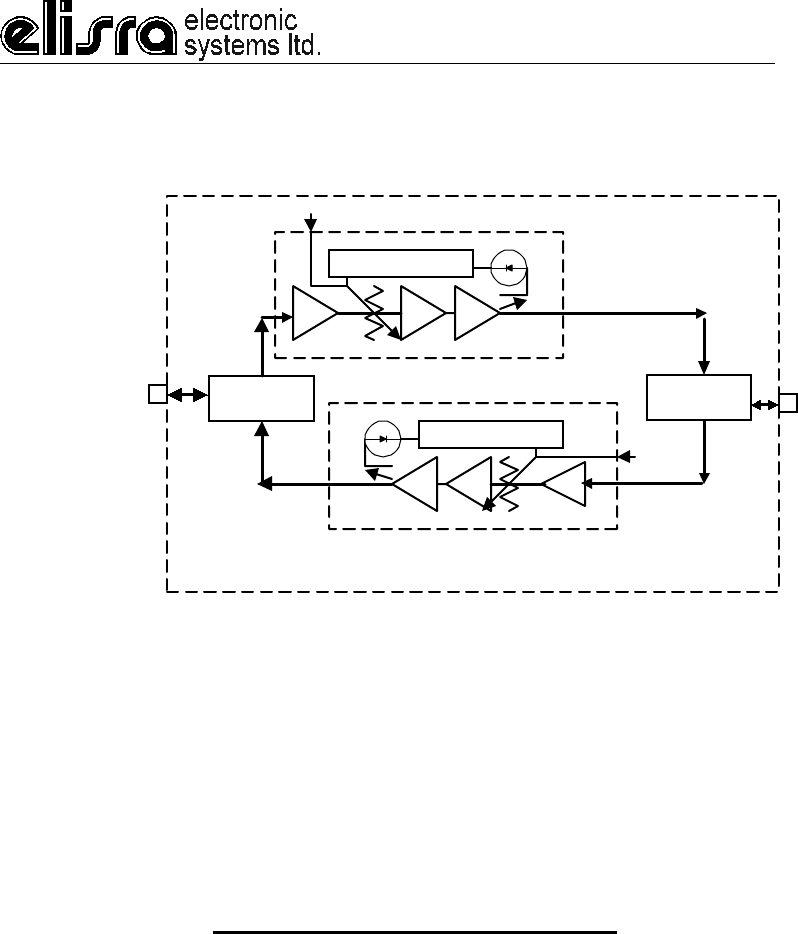
FCC ID: OIW CBDASMRPS8
Page 5 of 11
BDA BLOCK DIAGRAM
MW-CBDA-SMR-1W60PS-8
Duplexer
Downlink
Duplexer
Uplink
TO
BASE
STATION
ANTENNA
TO
AREA
ANTENNA
(N-TYPE)
(N-TYPE)
AGC RF AMPLIFIER
AGC CIRCUIT
DETECTER
AGC CIRCUIT
DETECTER
AGC RF AMPLIFIER
COUPLER
COUPLER
MGC
MGC

FCC ID: OIW CBDASMRPS8
Page 6 of 11
ELECTRICAL SPECIFICATIONS:
Frequency Range : Up Link : 806 – 824 MHz
: Down Link : 851 – 869 MHz
Passband Gain @ min attenuation : 60 dB minimum
Passband Ripple : ±1.5 dB typical
Noise Figure @+25°C at max gain : 6.0 dB max
3rd Order Intercept point : +45 dBm typical
IMD @2 tone @+20 dBm/carrier : 50 dBc typical
Isolation between Up/Down Link : 70 dB min
Impedance Level : 50 Ohms
VSWR In : 1.5 : 1 max
Power Supply : 80 to 240 VAC;
50 to 60 Hz; @500 mA
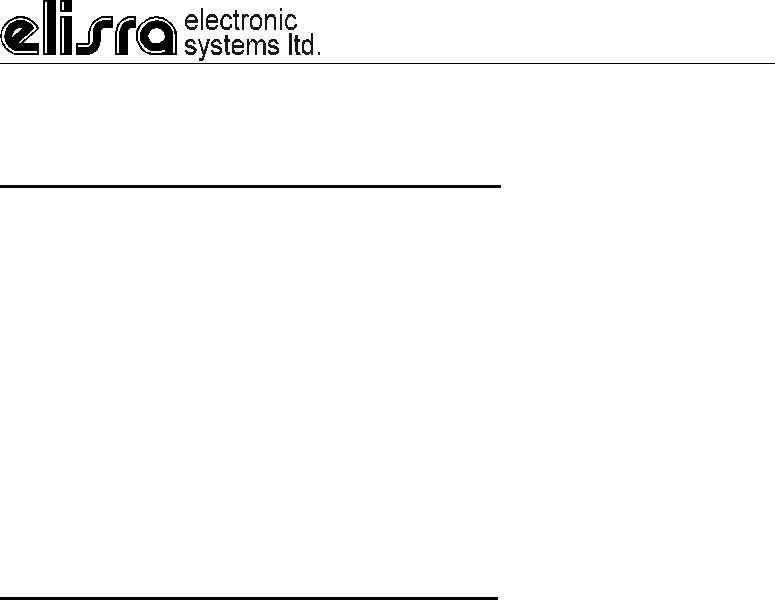
FCC ID: OIW CBDASMRPS8
Page 7 of 11
MECHANICAL SPECIFICATIONS:
Size : 9.84 x 9.61 x 4.53 inch
(250 x 244 x 115 mm)
RF Connectors : N-type Female
Weight : 10 Lbs. (5kg.) approx.
ENVIRONMENTAL CONDITIONS:
The unit is designed for indoor applications:
Operating temperature : - 30°C to + 50°C
Storage temperature : - 50°C to + 90°C

FCC ID: OIW CBDASMRPS8
Page 8 of 11
BDA CONNECTIONS
The BDA AC power is supplied through a standard 3-wire male
plug with phase, neutral and safety ground wires. The AC power is
only used to supply a high efficiency DC switching power supply.
The two amplifiers (Uplink and Downlink) and the Power On lamp
use only DC power.
The RF connection is made via two type “N” female connectors.
The RF connector labeled “Base” must be connected to the
antenna pointing to the base station. The RF connection labeled
“Mobile” must be connected to the antenna pointing into the area
to be covered by the BDA.
The connections must be made through 50 ohms impedance
cables.
The isolation between the base station antenna and the mobile
antenna should be at least 12 dB higher than the BDA gain. If the
isolation were less than the BDA gain, oscillation would start and
would saturate the amplifier. Isolation few dB higher than the BDA
gain cannot start oscillations but would causes gain ripple in the
band.
PERIODIC MAINTENANCE
The BDA should provide long term, care free operation with no
need of any periodic maintenance.
The BDA has no user adjustments or alignments.
The front panel lamp indicates power supply turn on.

FCC ID: OIW CBDASMRPS8
Page 9 of 11
DIAGNOSTICS GUIDE
As mentioned before the BDA should provide long term, care free operation
with no need of any periodic maintenance. This section will cover possible
problems that may show up after installation.
a. Gain Reduction
Possible causes: Bad RF cables and RF connections to antennas, Damaged
antennas.
b. Excessive Intermodulation or Spurious
Possible causes:
Amplifier oscillation caused by insufficient isolation. The isolation between two
antennas is given by the equation:
Isolation = 92.5 + 20 Log ( F x D ) – Gt – Gr
F is frequency in GHz
D is separation in Km
Gt is the transmit antenna gain (at the direction of the receive antenna).
Gr is the receive antenna gain (at the direction of the transmit antenna).
For example at the SMR frequency the antenna isolation at 100 m separation
is about 71 dB for omni antennas (0 dB gain). To increase isolation the
antennas should have higher directivity and must be pointed away from each
other.
c. Occasional Drop-out of some Channels
Possible causes: One channel with very strong power dominating the RF
output of the amplifier.
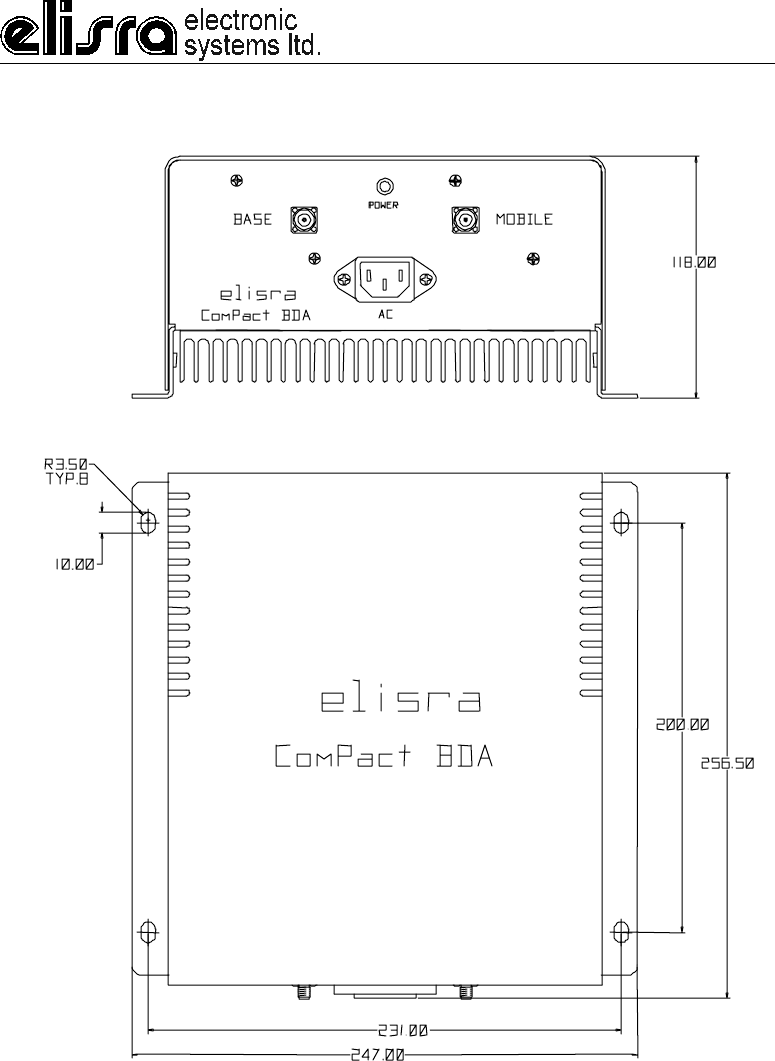
FCC ID: OIW CBDASMRPS8
Page 10 of 11
MECHANICAL OUTLINE

FCC ID: OIW CBDASMRPS8
Page 11 of 11
RF EXPOSURE WARNING:
In order to satisfy the FCC RF exposure requirements, you must ensure that
the installation complies with the following:
One antenna is connected via cable that has 3~10 dB attenuation (depends
on the length of the cable) to the CBDA BASE port. This antenna is installed
outdoor and has very sharp beam (Yagi type or similar) pointed to the donor
(BTS). This type of antenna has about 10 dBi gain. Typical specifications:
(model ASPD2996): gain: 8dBd (=10.1dBi), VSWR: better than 1.5:1 ,
Impedance: 50 ohm, F/B ratio: 18 dB, E-plane Beamwidth: 47deg., H-plane
Beamwidth: 58 deg. You must maintain a minimum distance of 0.3m from the
outdoor antenna to people within the area.
The second antenna is connected via cable that has 2~6 dB attenuation
(depends on the length of the cable) to the CBDA MOBILE port. This type of
antenna is omnidirectional (isotropic) with 0 to 2 dBi gain and is installed and
distributes indoor (in buildings, tunnels, basements, park lots, shopping
centers etc.). This antenna is installed usually on the ceiling. Typical
specifications: (Kathrein model No. 741 572): gain: 2dBi, VSWR: better than
2:1 ,Impedance: 50 ohm, Polarization: Vertical. You must maintain a minimum
distance of 0.1m from the indoor antenna to people within the area.